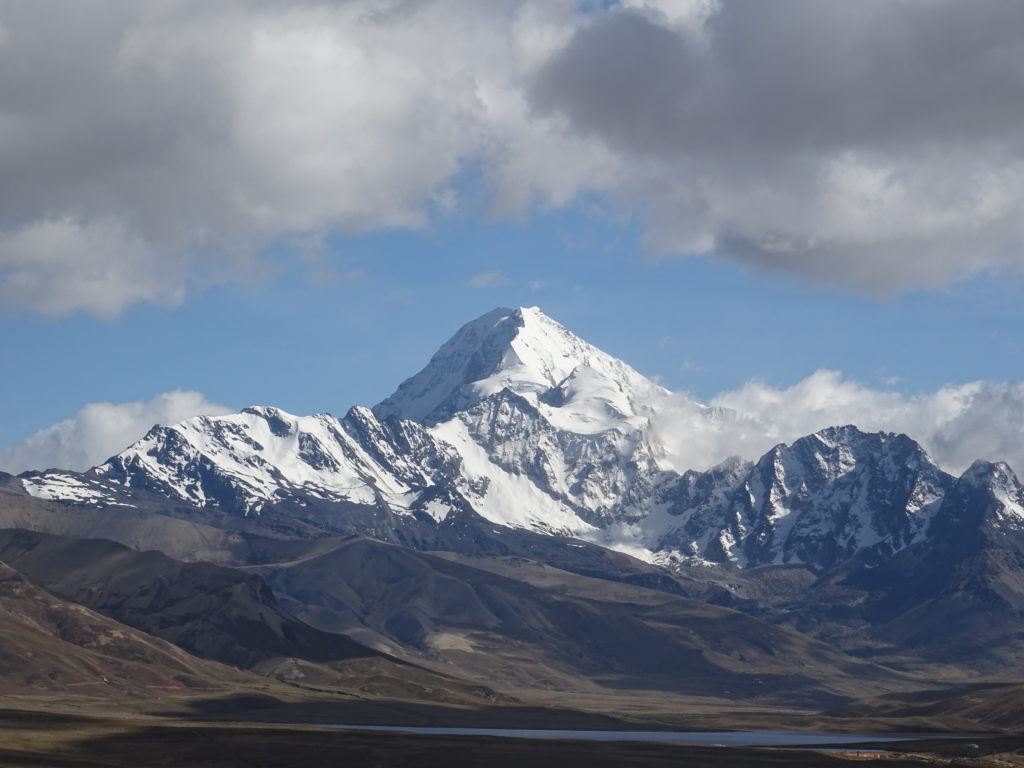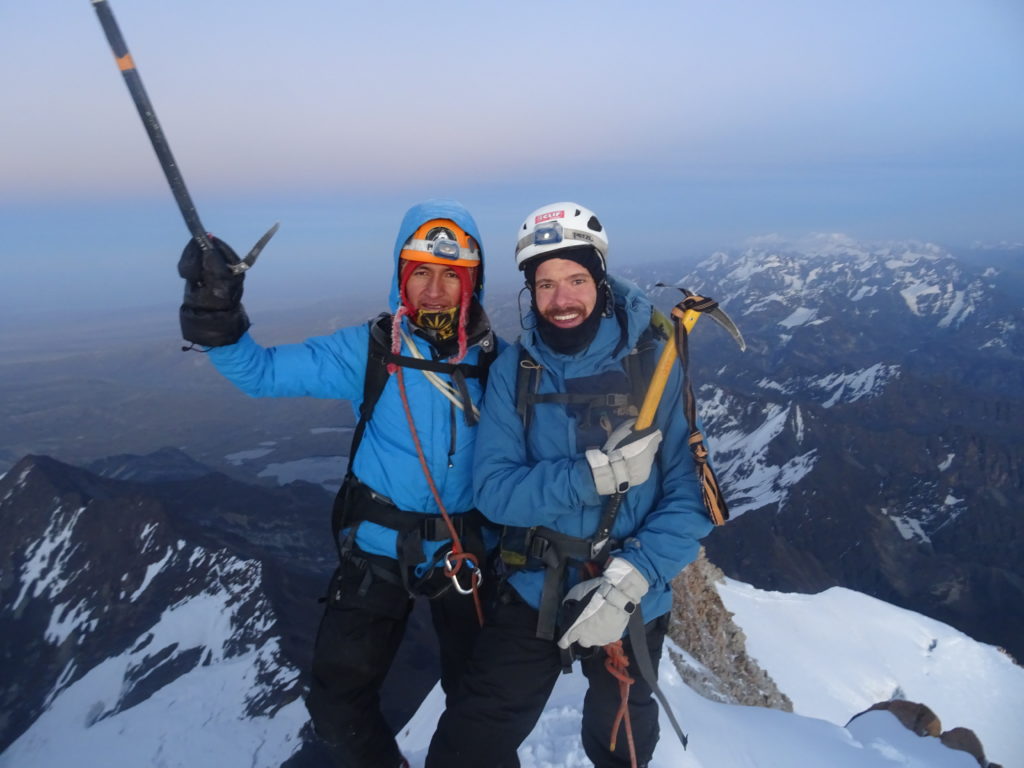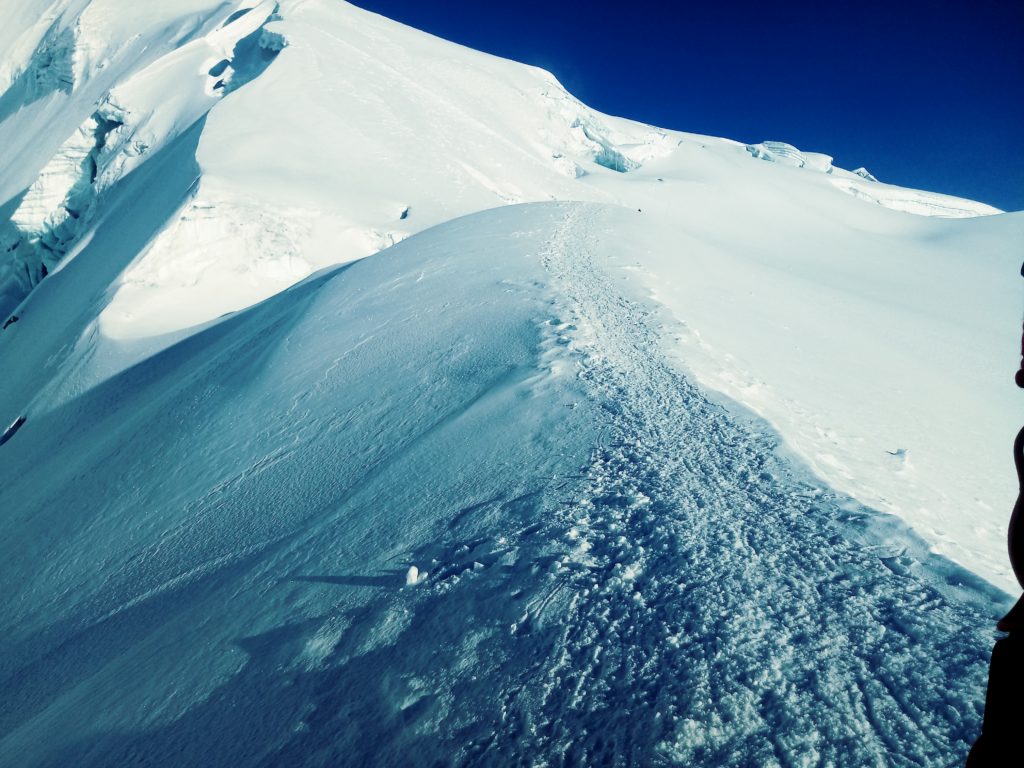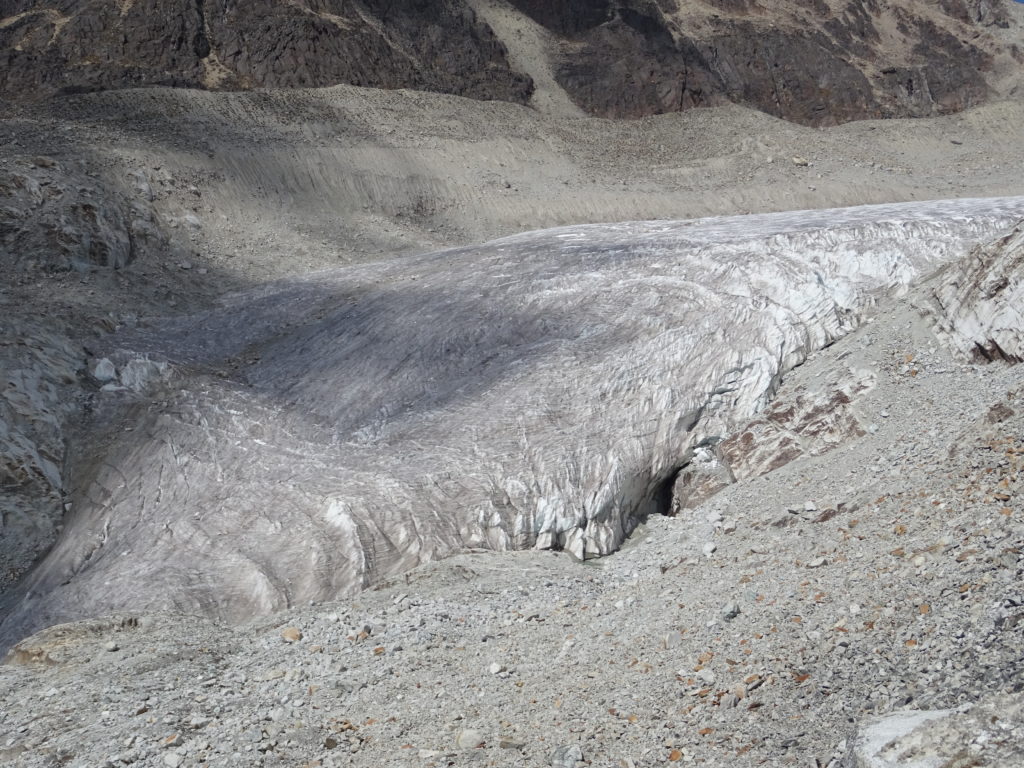October 28th and 29th
Close to la Paz are summits above 6000m, said to be the most accessible in the world. I decided to try the ascent of one. I had been told that it was not easy and that there are several people that abandon midway. But I like challenges and the idea of being able to say “I’ve climbed a 6,000” is nice. I contacted a guide recommended by my hostal, and organised the climb of the Huayna Potosi, at 6,088m.
On saturday october 28th, we left la Paz in car and went to a base camp, 4,700m high. From there, we went up to the high camp at 5,200m. We spent the afternoon there, resting, and drinking tea (it’s important to stay hidrated in altitude). A couple of germans with their guide joined us in the afternoon. Around 6pm, after eating, we go to bed. I couldn’t really sleep, because of the altitude. I eventually drowsed from 10 to 12, when the germans’ alarm clock woke me up (I had not set an alarm, thinking the guide would wake me up). We had breakfast and left around 1am.
The refuge is just before the beginning of the snow, so we put on crampons after 2 minutes. Then we start ascending, with our headlamps. We walk slowly but I feel ok. After 2h walking up, “we’re almost halfway”. I wanna say “only halfway?” but it’s normal, the guide had told me 4 to 5h up. When hiking generally when someone says 5h it takes me 3,5h but this is mountain climbing, not hiking.
The first difficult part is there, where I have to use the piolet. The guide goes first and then puts some tension on the the rope so I feel safe. This part is only 5 minutes, and I’m completely out of breath when it’s over. We keep going.
The more we go up, the more difficult it gets and the slower I feel. My steps are 3 or 4 seconds apart, and I stop every 50m to catch my breath. But seeing the other headlamps groups before and after me at the same pace reassures me.
After a while, I feel a little sick, a slight stomachache. But we’re soon at the top, so I think even if I throw up I’ll go all the way up. Last tough part: some uphill with use of the piolet again, and then a ridge, it’s almost vertical on both sides… I can’t imagine how it is for those who suffer vertigo.
We finally get to the top. Let’s take some pictures and go down, I think. It’s really cold, and I don’t feel very well. But I made it and I’m glad!
The german girl that also made it takes a picture of me and gives me back my camera, and then: with my cold hands and my gloves, I don’t catch it right, it fells, and start rolling down in the snow, then disappear behind a ridge. I haven’t backed up my pictures in 3 weeks… I think I lost it all. “Let’s go see”, the guide tells me. He looks above the ridge and thinks he sees it, 15 to 20m down. Another guide secures him and my guide rappels down. When he shouts “I have it!” I’m reassured, my pictures aren’t lost. He climbs back up and gives my camera back to me, the camera is a little wet but I have it.
We start going down. Easier than the way up… Once or twice my guide asks me to speed up, and it’s good that he does because I was starting to fall asleep! We get to the high camp at 8. I dry my camera in the sun. After another breakfast, we walk down to the base camp, and after a well deserved beer we drive back to la Paz. My camera works, I didn’t think it would.
I can now say that I’ve climbed a 6,000!




Pingback: Isla del Sol – 2017 travel